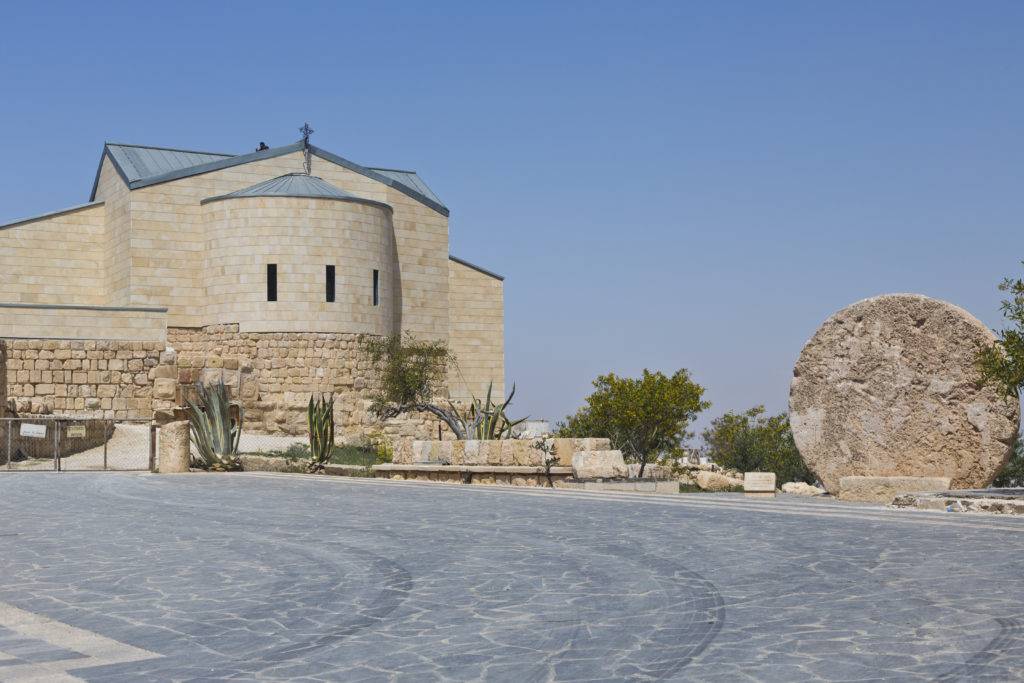Less than 10 kilometers west of Madaba is Mount Nebo, known as Pisgah in the Bible. It is where the Bible says Moses lived out his remaining days and viewed the Promised Land which he would never enter (Deuteronomy 34: 1-8). Mt. Nebo offers a fantastic view westward, with a vista that includes the Dead Sea, the West Bank , Jericho, the Jordan River, and, on a clear day, Bethlehem and Jerusalem.
There are actually two peaks on Mt. Nebo, Siyagha and al-Mukhayyat. During the sixth century CE, a Byzantine monastery was constructed at Siyagha. It was built on the foundations of an even earlier chapel, which was erected by monks from Egypt during the third or fourth century CE. Although little remains of the buildings that housed them, the mosaics of this period can be seen today inside the modern-day shrine atop Siyagha.
The main mosaic, which measures three by nine meters, depicts the monastic pastime of wine-making, as well as hunters and an assortment of animals. Outside the building is an enigmatic Serpentine Cross. The figure represents the bronze serpent taken up by Moses in the desert, as well as the cross upon which Jesus was crucified.
Just beyond Feisaliyya, a small town just east of Mt. Nebo, there are the remains of the village of Nebo. The place, now known as Khirbet al-Mukhayyat, was mentioned in the Bible as well as on the Mesha Stele. Here, during the middle of the sixth century, villagers constructed their own church dedicated to the Saints Lot and Procopius. The floor was, of course, decorated with yet another rich carpet of mosaics which can be seen today. Travelers to Mt. Nebo seldom venture on to Khirbet al-Mukhayyat, so a brief detour here might be especially rewarding.

